
This International Women's Day, AZoBuild had the pleasure of speaking with Prof. Dr. Silke Langenberg from ETH Zurich about her impressive career and research.
Please can you introduce yourself and your current role?
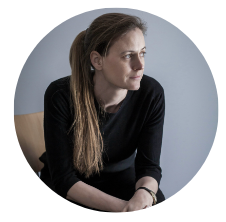 My name is Silke Langenberg, and I am a Full Professor for Construction Heritage and Preservation in the Department of Architecture at ETH Zurich. Before coming back to Zurich, I was a full professor for Preservation, Building in Existing Contexts and Building Research at the University of Applied Sciences in Munich.
My name is Silke Langenberg, and I am a Full Professor for Construction Heritage and Preservation in the Department of Architecture at ETH Zurich. Before coming back to Zurich, I was a full professor for Preservation, Building in Existing Contexts and Building Research at the University of Applied Sciences in Munich.
What first drew you to architecture, and how did you start out in this field?
I was always more interested in existing buildings than in new constructions, and I started to study architecture directly with a focus on the existing. However, during my studies I found myself fascinated also by new construction techniques and, especially, by building processes.
You are currently Professor for Construction Heritage and Preservation at ETH Zurich. What does that entail?
I think it's the only chair that focuses explicitly on construction heritage. It was first announced as a professorship for preservation and building in existing contexts, but because of my research background, I shifted the focus and the title.
For the younger building stock, I think it's important to also take into account technical aspects like construction or building processes - how the buildings were developed.
I'm quite interested in building innovations and how they have influenced architectural expression.
My research here at ETH Zurich spans disciplines. We like to call it “bridging the gap”. My chair is affiliated with two institutes which makes interdisciplinary work and exchange come naturally, and that is quite unique. I really like unconventional collaborations. For example, we currently work with colleagues from mechanical engineering, and also with the Game Technology Center of ETH Zurich.
What kind of building innovations do you find particularly exciting?
I am interested in building processes, mainly those that were developed in the 20th century. This focuses on mass fabrication of building elements to build a lot in a short time, and so it's about automation in construction.
These developments often resulted in building systems to limit the number of standardized building elements. These buildings were also planned to be adapted and expanded over time. However, when it comes to monuments, we have to balance between flexibility and keeping the original substance.
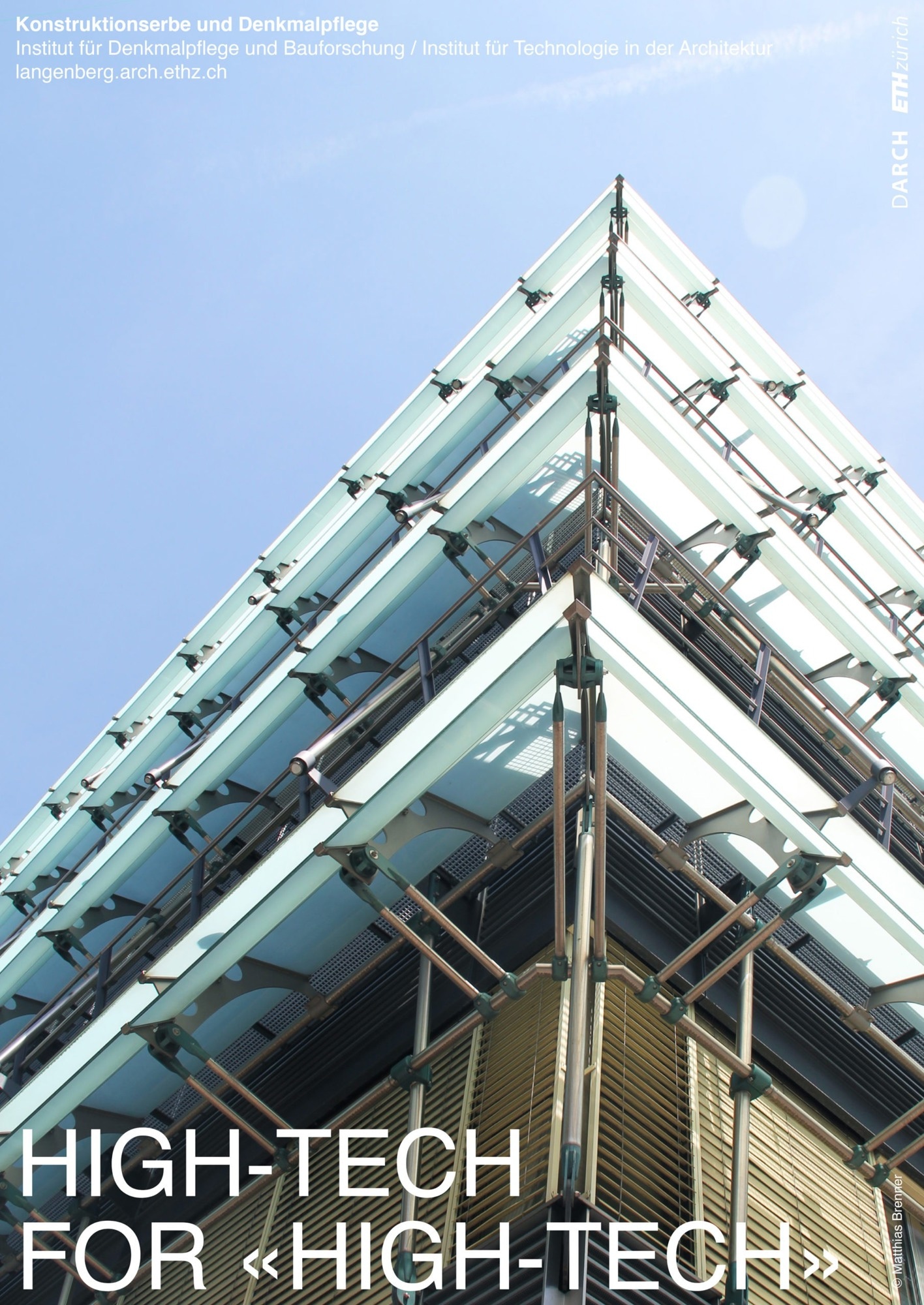
How about building processes that are really hidden? For example, prestressed concrete would be something in the finished object - I cannot see it, but there is significant innovations behind that. We also have a research project that looks at the role of the patent in architecture. Is this maybe also some hidden value inside constructions?
What are some of the ways that preservation is culturally, economically, and environmentally valuable?
In teaching, there is quite an interest in this subject as these are really urgent questions we have to face.
We try not to draw a dividing line between protected and non-protected objects, because in Switzerland a maximum of 5 to 10% of the building stock is protected, as opposed to the remaining 90%. And that 90% is actually the building stock we could easily work with.
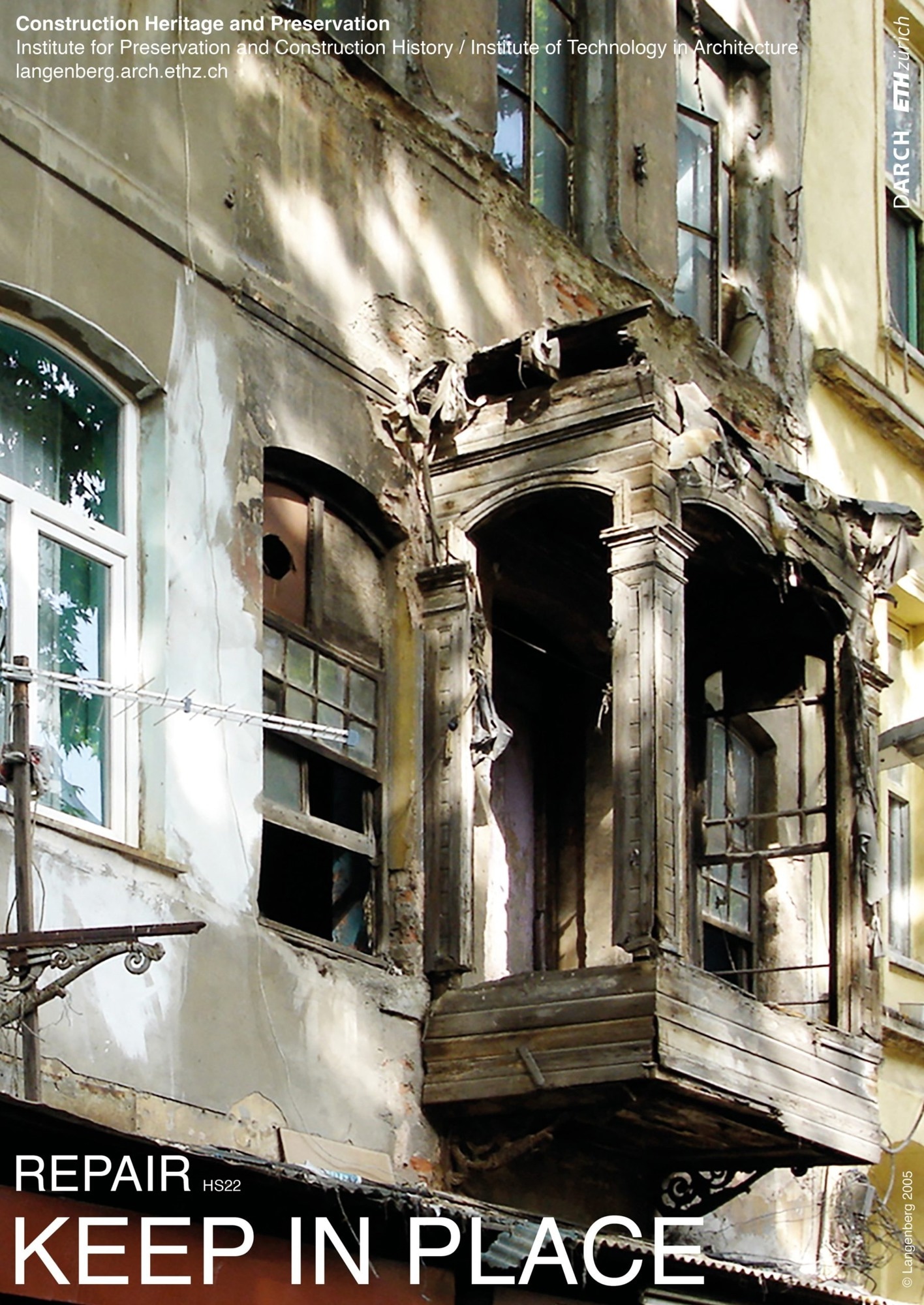
We don't have to demolish this 90%; we can transform it easily without the regulatory restrictions which apply to protected monuments. So, there is really a chance there.
We also always do the calculations of ‘how much CO2 is inside the building?’ How much material? How much grey energy? And so on.
Do you currently have any ongoing research projects?
A few. At the moment, one of the most important is funded by the SNF. We are looking – as already mentioned – at architecture and patents, which is really crucial and the center of my interest at the moment. We are investigating how patents influence architecture: how a building looks, how it is built, how the construction site is processed, what building machines are used, etc.
We are focusing on university buildings, and especially those of ETH Zurich and EPFL. Very often, they are test buildings or prototypes for new technologies, and so we see this as a perfect stock on which to conduct our research. These buildings are also related to my former background; for my Ph.D., I worked on university buildings and campus planning in the '60s and '70s and building rationalization.
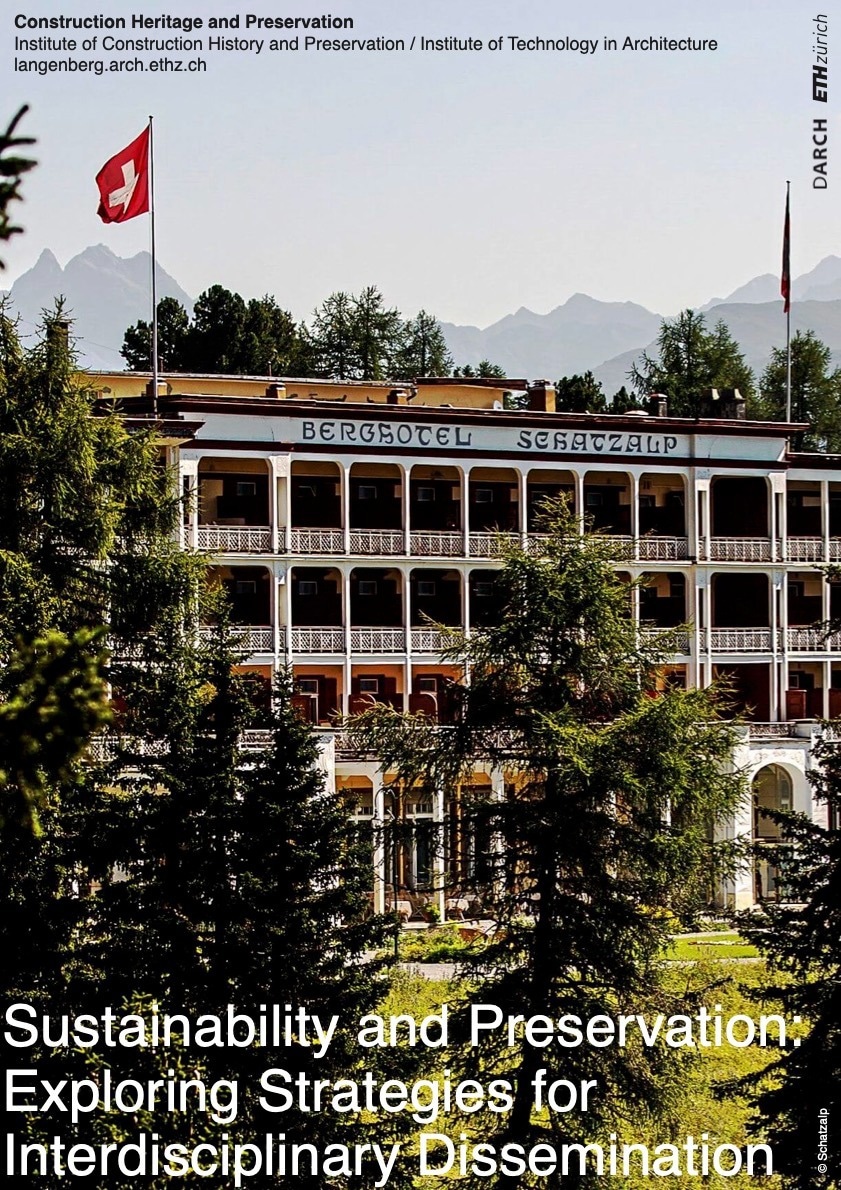
But we also work on other topics. One of them focuses on the completely different field of preservation and heritage. It is a research and exposition project called ‘A Future for Whose Past.’ It's about the heritage of minorities, fringe groups, and people without a lobby. What building stocks are important to protect for these groups that are maybe not yet covered by monument protection? It’s also a question of who decides what is important for these groups. We would like to put bring up these questions within the context of the European Year of Heritage Preservation in 2025.
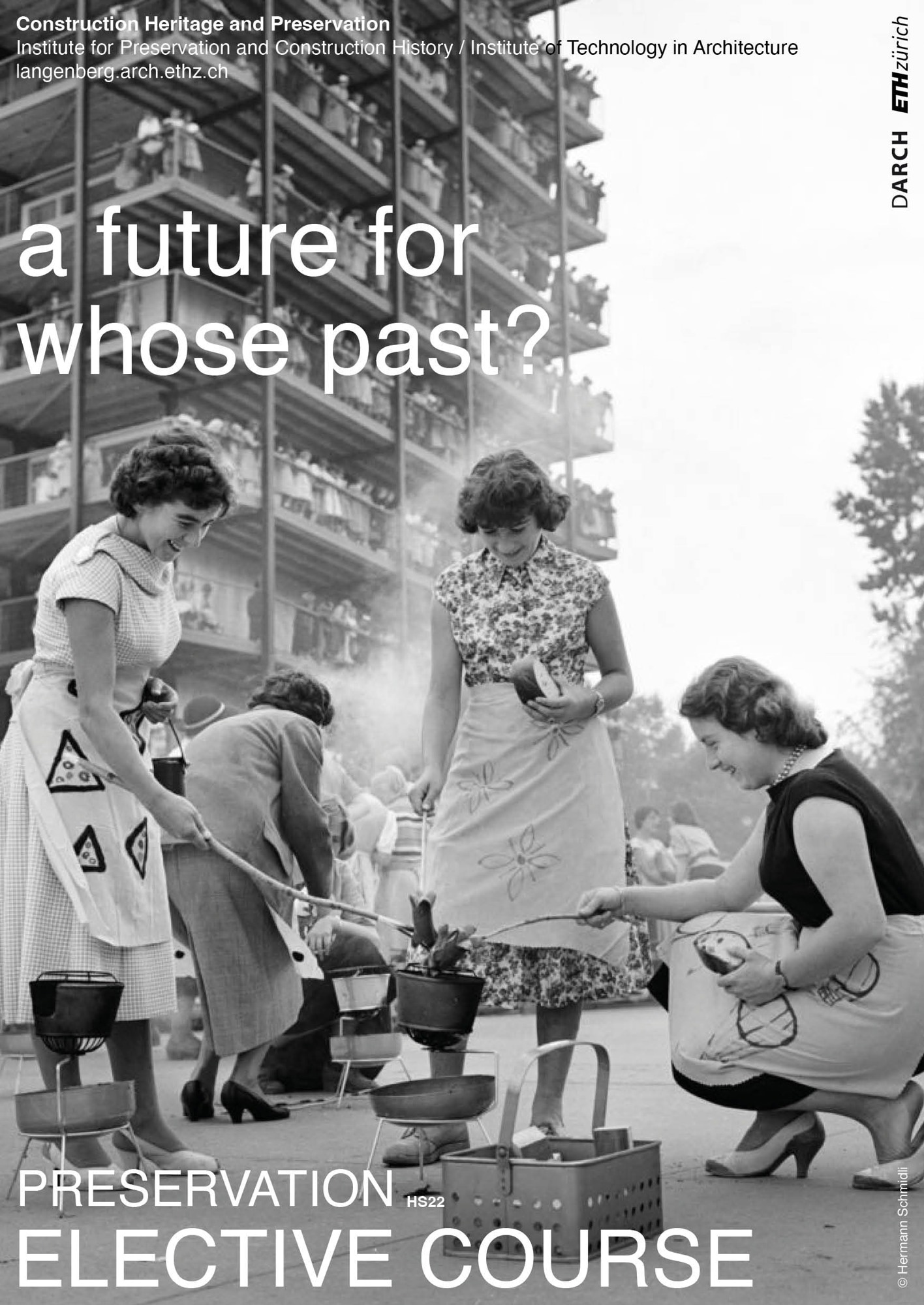
We have many more ongoing projects, and they are all on our website. The topic of repair is another idea that I've been dealing with for years. I have two Ph.D. students who do research in that field, too. How can we use new repair technology, or digital fabrication, to maintain and repair existing objects?
Looking back over your career, are there any projects or moments that were particularly significant or enjoyable?
When I finished my Ph.D., that was also when I moved to Zurich and started at ETH, so this moment was significant for sure.
I would say the most important step for me was to leave the field I was used to working in and was familiar with - leaving my comfort zone. I changed from the institute in building research and preservation to the institute of technology in architecture, where I worked as the chair for digital fabrication. That was quite a step into a completely different world, with an entirely different set of colleagues. I think that was really crucial step in my career.
What advice do you have for women and girls entering the architecture, building and construction fields?
For me, it was important to plan my career a little bit. I knew quite fast that I had to do a Ph.D. very early on in that field. If you want to exist in the field of preservation or historic building research, you need a Ph.D. There's no doubt about that.
I was asked a similar question by some former students before, "What would be the most important advice you would give young colleagues?" and I said, "Eyes wide open, if you choose your partner." It’s very difficult if you have to do everything alone, or against the career plans of somebody else. It's something that you have to plan, maybe together.
It’s also important to be aware that it's not easy, and that it's a lot of work. And it’s also not necessary to be perfect all the time in everything.
About Silke Langenberg
 Silke Langenberg is a German-Swiss heritage scientist and architect. She is a full professor of construction heritage and preservation in the department of architecture at ETH Zurich. Langenberg studied architecture at the University of Dortmund (D) and at the IUAV (I). She worked as a research assistant at the Chair of Preservation and Building Research, University of Dortmund, where she was awarded a doctoral degree with a thesis in engineering sciences. From 2006 to 2014, she was a researcher at ETH Zurich. Between 2011 and 2013, she visited the Singapore-ETH Centre for Global Environmental Sustainability multiple times as researcher in residence. In 2014, she took over the professorship for Building in Existing Contexts, Preservation and Building Research at the University of Applied Sciences in Munich. On 1 August 2020 she returned to ETH Zurich to assume the second full professorship at the Institute for Preservation and Construction History at ETH Zurich.
Silke Langenberg is a German-Swiss heritage scientist and architect. She is a full professor of construction heritage and preservation in the department of architecture at ETH Zurich. Langenberg studied architecture at the University of Dortmund (D) and at the IUAV (I). She worked as a research assistant at the Chair of Preservation and Building Research, University of Dortmund, where she was awarded a doctoral degree with a thesis in engineering sciences. From 2006 to 2014, she was a researcher at ETH Zurich. Between 2011 and 2013, she visited the Singapore-ETH Centre for Global Environmental Sustainability multiple times as researcher in residence. In 2014, she took over the professorship for Building in Existing Contexts, Preservation and Building Research at the University of Applied Sciences in Munich. On 1 August 2020 she returned to ETH Zurich to assume the second full professorship at the Institute for Preservation and Construction History at ETH Zurich.
Disclaimer: The views expressed here are those of the interviewee and do not necessarily represent the views of AZoM.com Limited (T/A) AZoNetwork, the owner and operator of this website. This disclaimer forms part of the Terms and Conditions of use of this website.